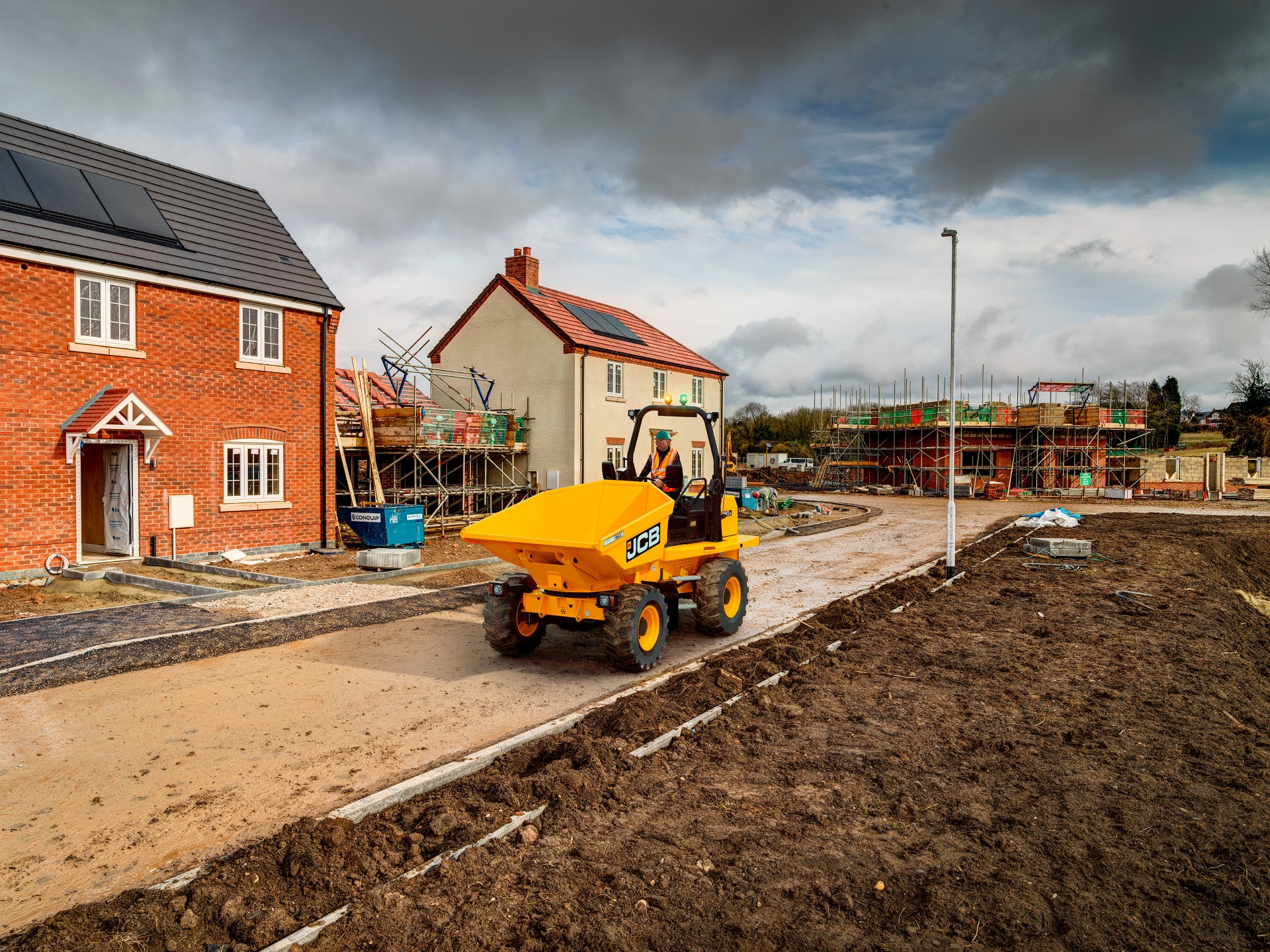JCB has used this week’s PlantWorx exhibition to launch the 6T SiTESAFE ROPS site dumper.
The model is compliant with the new EN474 standard, requiring site dumpers with an operating machine mass between 3,500kg and 4,500kg to have an additional operator protection system to prevent users from being ejected in the event of a roll-over. The 6T SiTESAFE ROPS dumper has a maximum machine mass of 4,500kg.
The ROPS machine joins the full-cab six and nine-tonne models in JCB’s SiTESAFE site dumper line-up. The ROPS structure features large opening gates to either side of the machine, with heavy-duty latches. JCB explained the design allows three-points of contact when climbing onto or leaving the machine. The gates also provide additional operator stability when traversing rough ground and there is no impact to all-round visibility.
“Some manufacturers’ designs don’t offer much operator protection, while others have large pads that significantly restrict visibility to the side and rear,” said a JCB spokesperson. “Having a good view of these areas is critical when driving a dumper through cones, poles or past other vehicles, so we decided that our design had to maintain the exceptional all-round visibility of a conventional ROPS dumper, while maximising safety.”
The 6T SiTESAFE ROPS dumper is powered by a 55kW (74hp) JCB DieselMAX diesel engine, that has been paired with a new JCB SS670 four-speed synchroshuttle transmission.
“Some manufacturers have moved to a hydrostatic transmission on larger dumpers, but the parasitic loss of a hydrostatic system results in reduced performance,” said JCB. “Most customers still like the simplicity and performance of a gearbox and torque converter, as this is easy to service and has great performance on and off-road, including up and down steep inclines and through deep mud, where hydrostatic transmissions may struggle.”
The dumper is available with a swivel tip, allowing the machine to tip to either side, or the SiTESAFE front tip skip, which is said to offer up to 30% better visibility than a conventional front tipping model, thanks to its lower overall skip height. The machines boast a gas-strut assisted engine canopy, with additional lockable hatches under the seat.
Additional EN474 changes include a bubble inclinometer as standard, to prevent the operator exceeding the maximum safe slope, rear view mirrors, and a front camera.
Options include fully compliant road lighting, LED working lights, and SiTESAFE 360° camera and front object detection systems. Factory-fit high-visibility steps and handles can also be specified.











